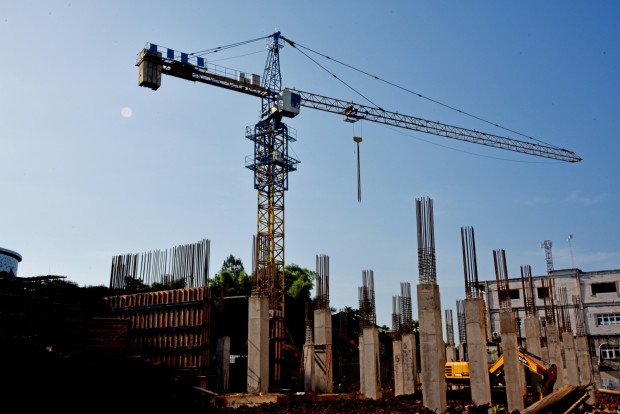In contrast to the aesthetic appeal and practicality that characterize much residential construction, commercial endeavors prioritize flexibility and functionality. Due to their magnitude and intricacy, commercial projects necessitate thorough planning and coordination among multiple stakeholders. Meanwhile, residential projects generally encompass closer collaboration between contractors and householders.

(Photo : Unsplash/novila misastra)
1. Materials
In most cases, the residential market is dependent on wood as a building component during the construction process. On the other hand, individuals assigned to constructing commercial structures would utilize steel frames. As mentioned, one of the most straightforward explanations for this is that the difference in price between wood and steel is significant, which means that the typical homeowner needs help to afford to invest that magnitude.
2. Codes and Permits
Specific building projects are so extensive that commercial builders must have established relationships with their suppliers to guarantee that they are performing consistent work. It is possible to have unexpected headaches if there is a breakdown in this network or if you have weak ties with such vendors. Accordingly, any construction necessitates compliance with the applicable regulations and the acquisition of the required permits from the municipality where the structure is being constructed. When comparing the residential and commercial varieties, the most significant distinction is that the commercial market is subject to more regulations and restrictions. This occurrence can be attributed to the different composition of a structure.
3. Required Equipment
Most commercial construction projects require specialized equipment to be completed because of the large-scale nature of the construction industry. A wide variety of commercial building designs necessitate the utilization of heavy machinery, such as earth-moving equipment and cranes. As stated, heavy machinery is explicitly designed for use in industrial buildings. Professionals with extensive knowledge are required to run these machines to guarantee the project's quality and the workers' safety. Only the most luxurious buildings require industrial-sized construction equipment, even though residential construction requires specialized skills.
Moreover, there are reportedly numerous aspects of a residential construction project that can be completed by do-it-yourselfers with the assistance of friends or by watching instruction videos on the internet. Yet, this would not be possible if it were a commercial effort. In-home building errors and accidents are typically considerably simpler to rectify than those that arise in commercial construction and, therefore, do not result in a lawsuit as promptly.
Also Read: North Carolina Embraces Cutting-Edge Construction Safety Codes to Prevent Building Accidents
4. Licensing
Based on the nature of the construction project, the requirements for obtaining a contractor license may vary. Specific licenses may restrict the range of work that can be performed, even if you have a general permit to work on residential and commercial properties. As an illustration, residential contractors usually require a primary contractor's license. In contrast, commercial contractors could be required to have a specific permit that necessitates more examinations, more training, or other credentials.
5. Design Considerations
Compared to commercial properties, home projects often offer more freedom regarding the capacity to customize a design since residential properties are typically more expensive. To personalize design components for residential buildings, such as room layouts, paint colors, fittings, and finishes, you might collaborate closely with architects and homeowners to tailor them to the specific preferences and requirements of each one.
However, commercial construction offers less room for movement. Thus, contractors must carefully plan changes to maintain the project's practicality and ensure compliance with regulatory requirements and budgetary limits.
Related Article: Foundation Construction Techniques: 7 Tips For Every Builder and Contractor







